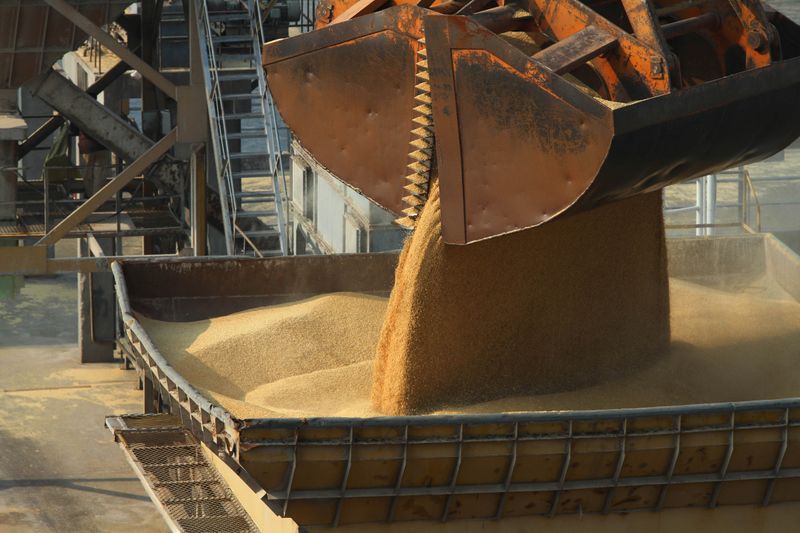By Hugh Bronstein and Maximilian Heath
BUENOS AIRES (Reuters) - Argentine barley shipments have started streaming toward China after a three-year lull as a trade conflict between Asia's top buyer and main supplier Australia changes global supply flows of the grain used for livestock feed and beer.
Argentina is on track to send at least 250,000 tonnes this year and a record 380,000 tonnes in 2021, according to export licenses and private company declarations seen by Reuters. That is up from virtually nothing in 2019.
"We loaded a ship on Sunday with 65,000 tonnes headed for China. And we have three or four shipments scheduled for January," said an Argentina-based trader with an international grains company who asked not to be named.
"China turned toward us this year because of its conflict with Australia," the trader said, referring to a political spat that saw China slap steep anti-dumping and anti-subsidy duties on Australian barley imports in May.
Eugenia Rul, head analyst at the Bahia Blanca Grains Exchange, said that prior to the Sunday shipment Argentina had sent 160,000 tonnes of barley to China in the last two months.
Argentine feed barley is shipped to Saudi Arabia, where it is used to feed camels, while its beer barley has gone mostly to South American brewers. Australia was China's main supplier.
"It's clear that China is choosing Argentina, very aggressively, as a new provider of barley," said Agustin Baque, a farm consultant and commodities trader specializing in barley, based in the Atlantic port city of Necochea.
Baque said the China-Australia conflict was pushing up demand for both beer and feed barley. "For 2021 we have business confirmed for 380,000 tonnes of Argentine barley to be exported to China, 180,000 of which will be malting barley," he said.
He said Argentine barley exports to China next year could reach as much as 800,000 tonnes depending on prices and the Australia-China trade relationship.
China is the top global importer of malt barley for brewing beer. It also uses the grain to feed livestock.
CAMELS AND BEER
"We are going to play (in) Australia's market basically because Australia is now looking to sell it's barley someplace other than China," said Robbie Cameron, a grower in the southern Buenos Aires agricultural area of Loberia.
"Australia is going to compete for our usual feed barley market, which is Saudi Arabia, and our malting barley markets in South America, so we are going to have to look at different places as well, like China," he added.
According to Argentina's INDEC statistics agency, a small, undisclosed amount of feed barley was shipped to China last year and the last time the country exported beer barley to China was in 2016, when 31,500 tonnes were shipped.
Argentine barley is sown in June and harvested in December.
The barley exported from Argentina this year is from the 2019/20 season. That harvested from the current 2020/21 crop year is scheduled for export starting in December, traders said.
With the best soils of the Pampas spread over an area larger than the size of France, Argentine growers said that if the China-Australia trade spat stretches into 2021, there will be plenty of room to plant more barley to meet increased demand.
Australia's barley output - estimated at 10.2 million tonnes in the 2020/21 crop year according the U.S. Department of Agriculture - dwarfs Argentina's 3.5 million tonnes. Argentine growers dedicated 6.35 million hectares to wheat this season while only 850,000 hectares were sown with barley on the Pampas.

"Historically barley has paid just a little bit more than wheat. But if we get a higher price the acreage can be increased a lot. And I mean, really a lot," said Santiago del Solar, another grower in the bread-basket province of Buenos Aires.